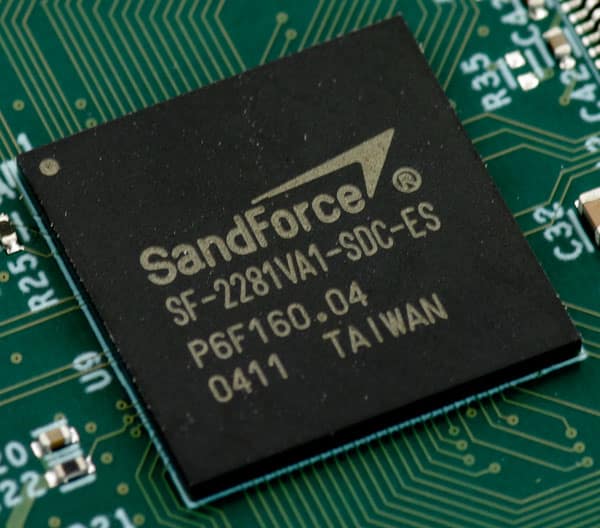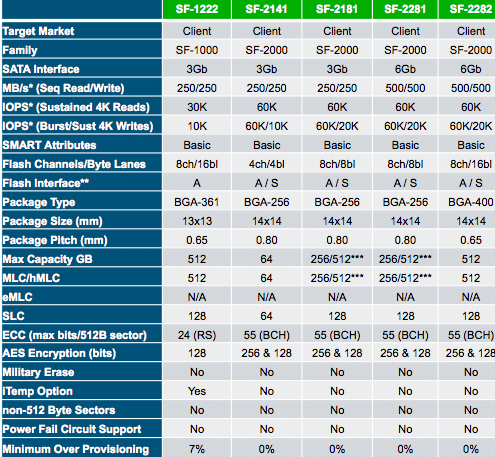
SandForce has brought their second generation SSD processors to the consumer space with the SF-2200 and SF-2100. The new processors leverage much of the technology from the enterprise controllers announced last year. The SF-2200 includes support for the SATA 6Gb/s interface and is the first controller to enable 500 MB/s+ read and write speeds for consumer SSDs. The SF-2100 is designed for mainstream SSDs and uses a SATA 3Gb/s interface to enable read and write speeds up to 250 MB/s.
Both processors include SandForce’s DuraClass Technology, which includes several endurance and performance features like wear leveling, garbage management, and RAISE. Incidentally, RAISE can now be turned on or off by SSD manufacturers, which is especially important for lower capacity drives. Imagine a 64GB SSD using 8 8GB NAND chips. With RAISE enabled, one of those 8GB NAND chips gets used for drive endurance management. Without, the user gets full access to the NAND, and actually gives up little in terms of endurance for those capacity levels (1029 vs. 1016 error rate) in practical terms. Drives with RAISE will see a performance gain though (10-20%), so we would expect drives in the 128GB range to be the cutoff for the disabling of RAISE. It’s important to clarify this point as consumers will likely see drives of similar capacity side-by-side (120GB and 128GB for instance).
Continuing on the endurance point, the new controllers are the first to publish a write amplification of less than 1. To simplify, write amplification is variable based on user activity and the data written to the drive; the lower the better in terms of drive efficiency and NAND longevity.
The new SandForce controllers support 2xnm (25nm) and 3xnm (32nm, 34nm) SLC and MLC NAND from all major suppliers, Intel-Micron, Toshiba, Hynix and Samsung. Other data protection features include Trusted Computing Group Opal security with 256-bit AES encryption, and an advanced ECC engine that can correct up to 55 bits per 512-byte sector, roughly double that of the prior generation SF-1200 processor.
While the SF-1200 won’t see end of life until NAND updates dictate a change, we’ll see SSDs based on SandForce controllers migrating over the next several months. Of course OCZ is already using the SF-2281 in the Vertex 3 and in pretty short order we’ll see the other major licensees moving to the SF-2100 for their mainstream SSDs in their next drive revisions.
For a deeper dive, here’s a chart that breaks down the various client processors.


